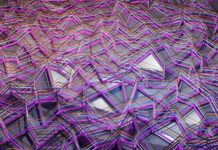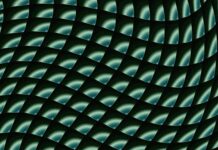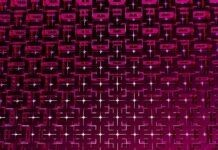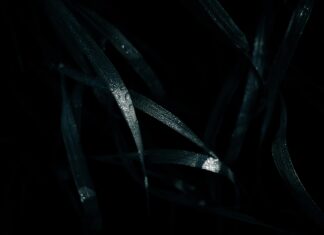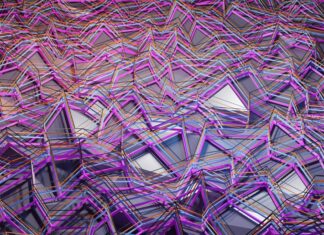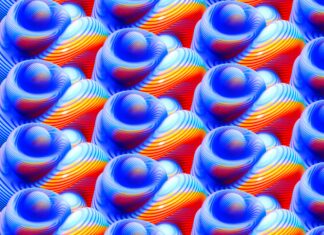In the fantastical realm of J.K. Rowling’s wizarding world, there exists a creature shrouded in mystery, known to only a select few. The Thestral, with its eerie and skeletal appearance, is a creature that has fascinated and intrigued witches, wizards, and readers alike. With its stark and haunting beauty, the Thestral embodies the enigmatic nature of magical beings, challenging our perceptions and inviting us to explore the depths of the extraordinary.
The Thestral is a creature that defies conventional description. Its most distinctive feature is its skeletal frame, covered in a thin layer of leathery skin. These creatures are often associated with death due to their appearance, with their empty eye sockets and skeletal wings. Their long, sinewy tails end in a whip-like appendage, and their sharp, elongated faces evoke a sense of otherworldly elegance. However, it is essential to look beyond their macabre exterior to truly understand the remarkable nature of the Thestral.
One of the most captivating aspects of the Thestral is its connection to death and the afterlife. According to wizarding lore, Thestrals are visible only to those who have witnessed and fully comprehended death. This unique ability to perceive Thestrals is not limited to humans but extends to other magical beings, such as house-elves and goblins. It is a testament to the universal significance of death in the wizarding world, transcending species and boundaries.
The Thestral’s association with death invites us to explore the profound themes of mortality and the afterlife within the wizarding world. It serves as a reminder that death is not just a physical event but a deeply spiritual and emotional experience. Those who can see Thestrals have confronted the harsh realities of life, and their ability to perceive these creatures is a symbol of their maturity and understanding.
Thestrals also challenge our preconceptions about beauty and appearance. While their skeletal form may appear unsettling at first, their presence is far from malevolent. In fact, Thestrals are known for their gentle and empathetic nature. They are highly intelligent and possess a deep sense of understanding and compassion. Their appearance belies their inner wisdom and kindness, reminding us that true beauty often lies beneath the surface.
The significance of Thestrals extends beyond their appearance and into the realm of symbolism. These creatures serve as potent symbols of understanding and acceptance. Harry Potter’s ability to see Thestrals after witnessing the death of Cedric Diggory represents his willingness to confront and process the trauma he has experienced. The Thestrals are a reminder that acknowledging and understanding our past is a crucial step toward healing and growth.
In the wizarding world, Thestrals also have practical applications. They are used to pull the carriages that transport students from the Hogwarts Express to Hogwarts School of Witchcraft and Wizardry. This role underscores the idea that even the most mysterious and misunderstood creatures can have a valuable place in society. It challenges us to look beyond appearances and recognize the contributions of all beings, regardless of their outward differences.
Thestrals are not solitary creatures; they form close-knit social bonds within their herds. These herds are led by a dominant female, and the creatures are known to be fiercely protective of their young. Their strong sense of community and family underscores the importance of connection and belonging in the wizarding world. It is a reminder that even the most unique and misunderstood individuals can find a place where they are valued and cherished.
In conclusion, the Thestral is a creature that embodies the complexity and depth of the wizarding world. Its appearance challenges our notions of beauty and acceptance, while its connection to death invites us to explore profound themes of mortality and understanding. Thestrals serve as symbols of growth, resilience, and the importance of acknowledging our past. They are a testament to the rich tapestry of magical beings that populate the wizarding world, reminding us that even in the darkest and most mysterious corners, there is beauty and wisdom to be found.
Invisibility to Most:
The most striking feature of Thestrals is their invisibility to those who have not witnessed and fully comprehended death. This makes them a rare and cryptic creature, often eluding the notice of the general wizarding population.
Eerie Appearance:
Thestrals have a skeletal, almost ghostly appearance with thin, leathery skin stretched over their bony frames. Their wings resemble those of bats, and their elongated faces feature empty eye sockets. Despite this eerie exterior, they are not malevolent creatures.
Wings:
These creatures possess bat-like wings that enable them to fly gracefully through the air. Their flight is often described as both majestic and haunting, adding to their mystique.
Visible Only to the Grief-Stricken:
Thestrals are visible only to individuals who have personally witnessed and internalized the reality of death. This ability to perceive them is linked to emotional understanding rather than mere visual acuity.
Highly Intelligent:
Thestrals are known for their intelligence and perceptiveness. They exhibit a deep understanding of their surroundings and the emotions of those around them.
Gentle and Empathetic Nature:
Despite their unsettling appearance, Thestrals are gentle and empathetic creatures. They are known to offer comfort and solace to those who are grieving, making them a source of support in times of loss.
Universal Perception:
Thestrals can be seen not only by witches and wizards but also by other magical beings, such as house-elves and goblins. This perception is not limited to a specific species, emphasizing the universal significance of death.
Symbolism of Maturity:
The ability to see Thestrals is often associated with maturity and emotional growth. It signifies a willingness to confront and process the difficult experiences and traumas of life.
Practical Uses:
In the wizarding world, Thestrals are harnessed to pull carriages. They are employed to transport students from the Hogwarts Express to Hogwarts School of Witchcraft and Wizardry, highlighting their practical contributions to wizarding society.
Strong Social Bonds:
Thestrals live in herds led by a dominant female. They exhibit strong social bonds and are fiercely protective of their young, emphasizing the importance of family and community in their species.
These key features make Thestrals a species of great depth and complexity, challenging our perceptions and inviting us to explore the profound themes of understanding, acceptance, and the mysteries of life and death within the wizarding world.
Thestrals are one of those remarkable creatures in the wizarding world that defy conventional categorization. While their distinctive features and their connection to death are well-documented, there is so much more to these enigmatic beings that goes beyond their skeletal appearance and their role as symbols of emotional understanding. In this exploration of Thestrals, we delve into the world of magic, symbolism, and the untold stories that surround these creatures.
Thestrals have long been associated with mystery and intrigue in the wizarding world. Their appearance alone is enough to capture the imagination and evoke a sense of wonder. With their skeletal frames and leathery wings, they stand as stark reminders of the unknown and the unexplained. But what lies beneath this eerie exterior is a wealth of complexity and depth that continues to fascinate those who dare to look beyond the surface.
In a world where magic is an everyday occurrence, Thestrals stand out as beings of paradox. They possess an air of both ethereal beauty and haunting eeriness. It is this duality that makes them so captivating. In literature and mythology, such dualities often symbolize the intricate balance between life and death, light and darkness, and beauty and decay. Thestrals, with their juxtaposition of beauty and macabre, embody these themes, inviting us to contemplate the fragile line that separates them.
The connection between Thestrals and death is undeniable. They are visible only to those who have witnessed death and, more importantly, have comprehended the gravity of that experience. This unique quality elevates Thestrals beyond the realm of mere magical creatures and positions them as guardians of a profound and universal truth: the inevitability of mortality. In this sense, Thestrals serve as reminders that death is not an abstract concept but an integral part of the human (and wizarding) experience.
In the wizarding world, where the line between the ordinary and the extraordinary blurs, Thestrals challenge our perceptions of what is beautiful or frightening. They teach us that true understanding goes beyond appearances. In many ways, they are a reflection of the broader themes found in the wizarding world, where individuals and creatures are not always what they seem. Just as Severus Snape, initially perceived as a villain, is revealed to be a complex and multifaceted character, Thestrals encourage us to question our judgments and explore the depths of compassion and empathy.
Thestrals, with their ability to sense and respond to the emotions of those around them, exemplify the power of empathy and emotional intelligence. Their presence is said to bring comfort to those who are grieving, offering a form of solace that transcends words. In this way, they embody the idea that understanding and support can be found in the unlikeliest of places, even in the presence of creatures that might initially inspire fear.
The symbolism of Thestrals extends beyond their individual characteristics and touches upon universal themes of life, death, and the journey in between. In literature, the journey of the hero often involves encounters with beings or challenges that serve as metaphors for personal growth and transformation. Thestrals, as guides in the wizarding world, represent the idea that the journey toward emotional maturity and understanding requires confronting the reality of death and loss. They are not obstacles to be overcome but companions on the path to wisdom.
In the grand tapestry of the wizarding world, Thestrals occupy a unique niche, standing at the intersection of magic, symbolism, and the human experience. They invite us to question our assumptions, challenge our fears, and explore the profound mysteries of existence. While they may be creatures of darkness, they also carry the light of understanding and compassion. In their presence, we find not just a glimpse into the enigma of death but also a reflection of the complexity and beauty of life itself.
Thestrals are a testament to the richness and depth of the wizarding world, where even the most mysterious and misunderstood creatures have a role to play in the grand story of magic. In their haunting presence, we discover a world of symbolism and meaning that transcends the boundaries of fiction and invites us to ponder the eternal questions that have fascinated humanity for centuries.








